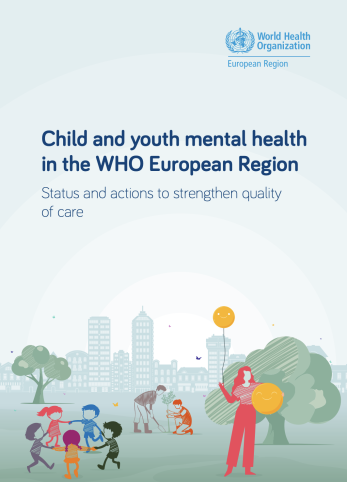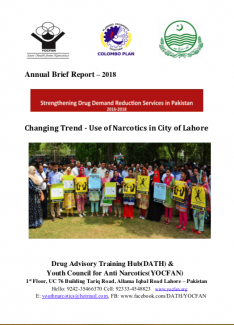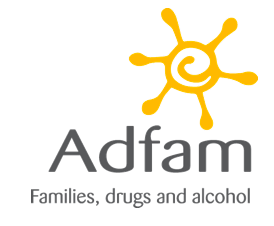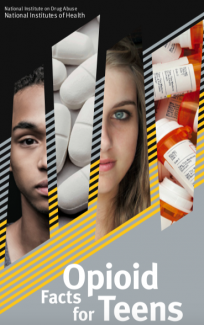
تلاش
Annual Report: Use of Narcotics in City of Lahore
The Drug Advisory Training Hub (DATH) & Youth Council for Anti Narcotics (YOCFAN) have published the latest annual report on the use of narcotics in Lahore.
The report gives an overview of the current situation in Lahore and outlines the...
پوڈ کاسٹ: پرائمری کیئر آبادیوں میں مختصر الکحل مداخلت کی تاثیر
کوچرن ڈرگز اینڈ الکوحل گروپ ان جائزوں میں مہارت رکھتا ہے جو دیگر چیزوں کے علاوہ، شراب کے خطرناک یا نقصان دہ پینے کو کم کرنے کے طریقوں کا جائزہ لیتے ہیں.
ان جائزوں میں سے ایک میں پریکٹیشنر کی طرف سے فراہم کردہ مختصر مداخلت وں کے ثبوت وں کو...
Barriers in Substance Use Disorder Treatment
The US is experiencing a public health crisis. In the US in 2016 alone, there were over 63,000 drug poisoning deaths. Despite these concerning figures, it is estimated that fewer than 20% (3.8 million) receive treatment and for those who do...
National Drug and Alcohol Facts Week
The National Drug and Alcohol Facts Week links students with scientists and other experts to counteract the myths about drugs and alcohol that teens get from the internet, social media, TV, movies, music, or from friends.
Click here for fr...
ویب سائٹ: مسئلہ زدہ مادہ کے استعمال والے لوگوں کے لئے زندگی کی دیکھ بھال کا اختتام
یہ ویب سائٹ شراب اور منشیات کے دیگر مسائل میں مبتلا افراد کے لئے زندگی کی دیکھ بھال کے اختتام پر دو سالہ تحقیقی پروگرام سے تیار کردہ وسائل پیش کرتی ہے. تحقیقی پروگرام اپنی نوعیت کا پہلا پروگرام تھا جس میں مختلف نقطہ نظر سے موجودہ مشق اور...
#StigmaMakesMeFeel - Adfam's Campaign to Raise Awareness of Stigma Experienced by Families Affected by Substance Use
Adfam is launching a new campaign #StigmaMakesMeFeel, to tackle the stigma experienced by families affected by drugs and alcohol.
From societal attitudes about substance use to unhelpful remarks from friends, stigma is rife and causes...
Pricing of Tobacco Products During, and After, the Introduction of Plain Packaging
In 2016 the UK government introduced a policy that required factory-made cigarettes and roll your own tobacco to be sold in plain packaging with pictorial and text warnings.
However, there was reluctance from tobacco companies to “make the...
Interactive Map: Medical Cannabis in the European Union
The vast majority of the countries in the European Union prohibit the production, sale, possession, and use of pharmaceutical-grade herbal cannabis. However, most EU countries allow cannabis-based medicine, such as Sativex, to be prescribed...
Treatment Gap, Help-Seeking, Stigma and Magnitude of Alcohol Use Disorder in Rural Ethiopia
Abstract
Background
Although alcohol use disorders contribute a high proportion of population disease burden, the treatment gap is large, especially in low- and middle-income countries. To narrow this gap, contextually relevant evidence...
Useful Meeting with Colombo Plan Representative on 18 January, 2019 in Karachi, Pakistan
Drug Free Pakistan Foundation staff had a great meeting with the Colombo Plan for Cooperative Economic and Social Development in Asia and the Pacific-Drug Advisory Programme (DAP) representative Mr. Mohammad Ayub Senior Advisor/Treatment...
UNODC Global eLearning
UNODCs online eLearning courses deliver trainings to a community of over 50,000 Member State officials on international security threats such as transnational organized crime, terrorism, illicit drugs, trafficking in persons and...
ICUDDR Training Sessions at ISSUP Conference in Kenya
The International Consortium of Universities for Drug Demand Reduction (ICUDDR) ran multiple sessions during the joint NACADA, ISSUP and African Union Drug Demand Reduction Conference & Workshop and have produced a selection of videos of...
Age‐Varying Effects of Cannabis Use Frequency and Disorder on Symptoms of Psychosis, Depression and Anxiety in Adolescents and Adults
A recent study, published in the Journal of Addiction, has examined the association of cannabis use, cannabis use disorder and symptoms of psychosis, depression and anxiety in an adolescent and adult sample. The researchers also examined...
Cognitive and Mindfulness‐Based Therapy for Adolescents with Co‐Occurring Post‐Traumatic Stress and Substance Use Disorder
Early life experiences of trauma are known to significantly increase the risk of substance use in adolescence and adulthood. It has been suggested that individuals may use alcohol or drugs as a means of temporarily relieving themselves from...
HIV Knowledge and Risk Behaviors among Drug Users in Three Vietnamese Mountainous Provinces
Abstract
Background
Globally, people who inject drugs are highly vulnerable to HIV transmission. Methadone maintenance treatment (MMT) programs are one of the most cost-effective mechanisms to substitute opioid use and improve the quality...
SPR 2019 Awards Nominations
The Society for Prevention Research are now accepting nominations for their 2019 Awards. The deadline for nominations is Thursday, February 28, 2019.
The 11 different awards are designed to recognize excellence in the areas consistent...
NIDA Resource: Opioid Facts for Teens
The National Institute on Drug Abuse has published a new resource to provide teenagers with accurate information about opioids.
The publication includes a selection of facts on opioids, a section on opioids and heroin, and a helpful list...
ICUDDR Conference: Call for Proposals
Managing Alcohol-Related Attendances in Emergency Care: Can Diversion to Bespoke Services Lessen the Burden?
Abstract
Acute alcohol intoxication (AAI) has a long history of burdening emergency care services. Healthcare systems around the world have explored a variety of different services that divert AAI away from EDs to better manage their...
Addiction Journal Podcast - January 2019
The Addiction Journal Podcast takes the listener through the content of the January edition of the journal, selects and discusses some of the highlights and includes interviews, which have been conducted with some of the authors.
Share the Knowledge: ISSUP members can post in the Knowledge Share – Sign in or become a member










